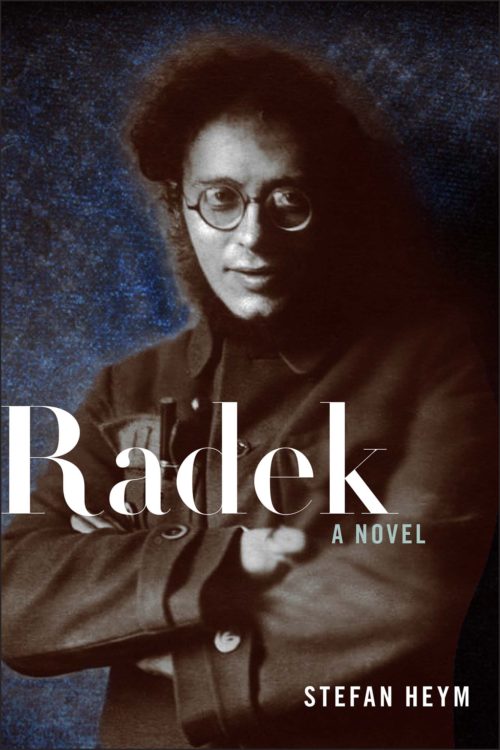Radek: A Novel
By Stefan Heym
576 page / 978-1-58367-955-5 / $28
Reviewed by Lizzy Siddal
The need to see the impact of the October Revolution on an individual level: I can’t explain better my reasons for wanting to dive into Stefan Heym’s 614-page fictional account of the life of Karl Bernhardovich Radek, one of the founders and protectors of the October Revolution, who ultimately became one of its victims (like so many others). Much as I enjoyed China Miéville’s history of the October Revolution a few years ago, Radek wasn’t a name I remembered. I borrowed the book, October, from the library again to check. There was only one fleeting reference to him.
All the more intriguing, then, why Heym latched onto him and penned the story of the rise and fall of a key player I had never heard of. It all stems from a personal affinity between author and subject. An insightful introduction written by Victor Grossmann, who personally knew Heym, a Jew with life-long leftist tendencies, shows that he – shall we say – boomeranged between Germany and the USA due to falling foul of the masters of Nazi Germany, Macarthy-era USA, and, after many years of sparring, socialist East Germany! No wonder then that the figure of Karl Berhardovich Radek, who fell in and out of favour with his communist masters held such an attraction. There’s also the fact that Radek was a victim of the Stalinist purges, events that socialists like Heym regarded as betrayal (once they came to light following Khrushchev’s speech of 1956). In Radek, Heym gave vent to the utter scorn he felt for Stalin.
In C21st century parlance, I’m thinking of Radek as a spin doctor because at varying times in his career he “spun” for Lenin and for Stalin, writing pamphlets, newspapers, acting as a foreign envoy. Admittedly I’m doing him a disservice because he was far more influential than that. Admittedly he was Lenin’s man rather than Stalin’s. He was a passenger on Lenin’s famous sealed train. He made the mistake, however, of aligning himself for ideological reasons with Trotsky after Lenin died, a decision he never really recovered from. I got the impression, from Heym’s telling, that Stalin played cat to Radek’s mouse ever afterward. Hoisting him on his own petard (sending Radek to Germany to initiate a revolution I suspect Stalin knew would fail), sending him into Siberian exile, bringing him back to be a propagandist and finally, once Radek had been too clever with his words for his own good, springing the trap.
As I mentioned before, Stalin is definitely Heym’s villain. But, for me, there are no heroes. These players are all instigators of a genocidal blood bath, Radek included. That said, and returning to the Banine’s thought regarding “the individual destiny formed of blood, flesh and suffering”, Heym paints a realistic picture of Radek’s strengths and weaknesses, in particular his intellectual hubris and the consequences of his actions on his long-suffering wife and daughter. Stalin is chilling in his control. Once he has it (and I’m still not sure how he managed to outmanoeuvre Trotsky) his grip never slackens. Even on an individual level. When Radek is rehabilitated after his Siberian exile, he is assigned an apartment which overlooks Stalin’s. Stalin becomes the always present shadow in the window – a constant reminder of who is boss and who is pulling the strings.
The novel is divided into eight parts covering the time from 1912 when Radek was expelled from the Polish Communist Party to 1939 when he was expelled from life itself. That’s Heym the great structural novelist at work for you. Start him low, raise him high (Lenin’s time lasts until midway through the novel), bring him down again, Hopefully Heym was not consciously imitating the tactics of “The Great Architect” Stalin! So much happens in these 28 years: so much drama, infighting, passion. Also much political argument. Fortunately much of it in dialogue which keeps things moving, but there are times when the novel does get bogged down, and others when it is confusing due to lack of timeline indicators. Obviously this wouldn’t be the case for one more familiar with the actual history. For me, Heym’s final historical novel was an epic, rewarding read, albeit a slow one as I needed to take breaks between the sections to read other things. In all, I read Radek over a period of two months.
You can read this review in full at Lizzy’s Literary Life

Comments are closed.